La Grand-Place, Brussels
By Diana Goodwin
What is La Grand-Place, Brussels?
La Grand-Place (in French, sometimes written as La Grand’Place) or De Grote Markt (in Dutch) is a large, open square surrounded by historic buildings located in the center of bilingual Brussels, Belgium. The main buildings are the 15th-century Hôtel de Ville or Stadhuis (city hall) on one side, and the Renaissance-style Maison du Roi (“king’s house” in French) or Broodhuis (“bread house” in Dutch) opposite.
Disclosure: This article contains affiliate links. Making a purchase through an affiliate link will mean a small commission for this website. This will not affect your price. Privacy policy.
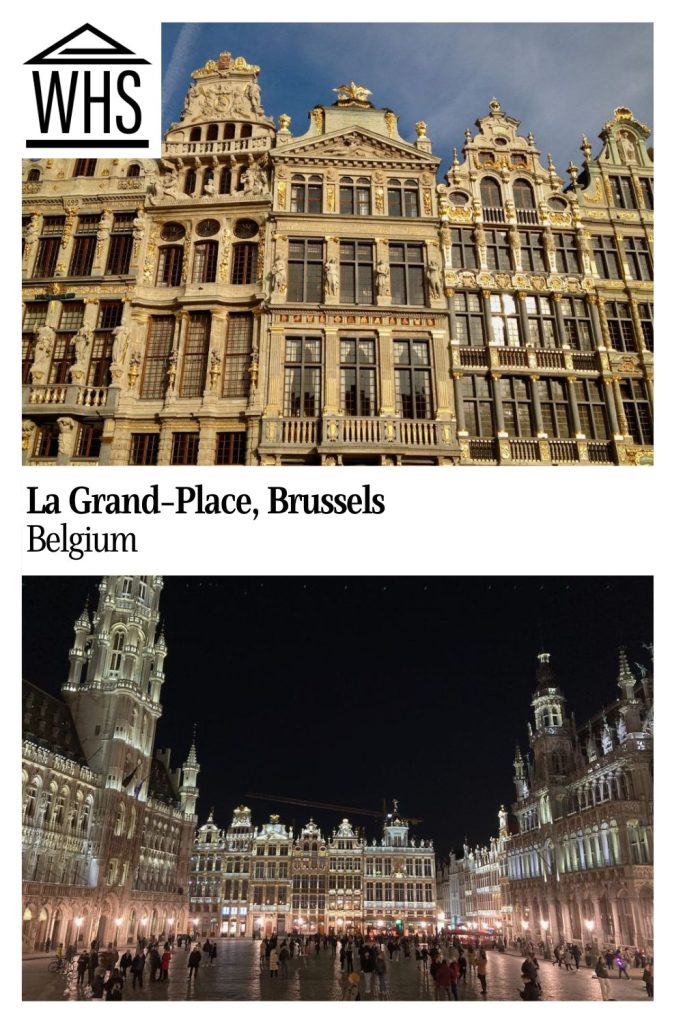
The square was the commercial and political heart of the medieval city for centuries but was mostly destroyed by French artillery fire in 1695. However, the wealthy citizens of Brussels quickly rebuilt in the following years, following the latest architectural fashion. This uniformity of style gives the square a monumental and impressive appearance. The ornate facades of the guild houses are decorated with gold leaf that glitters in the sun.
Today, the Gothic city hall retains its historic function and is used for ceremonial purposes. The former guild houses are home to shops and restaurants. The Maison du Roi (called Broodhuis in Dutch because it stands on the site of the former baker’s guild) now houses the Museum of the City of Brussels. Car-free since 1990, the square is a popular tourist attraction and often hosts festivals and events such as the biannual Brussels Flower Carpet.
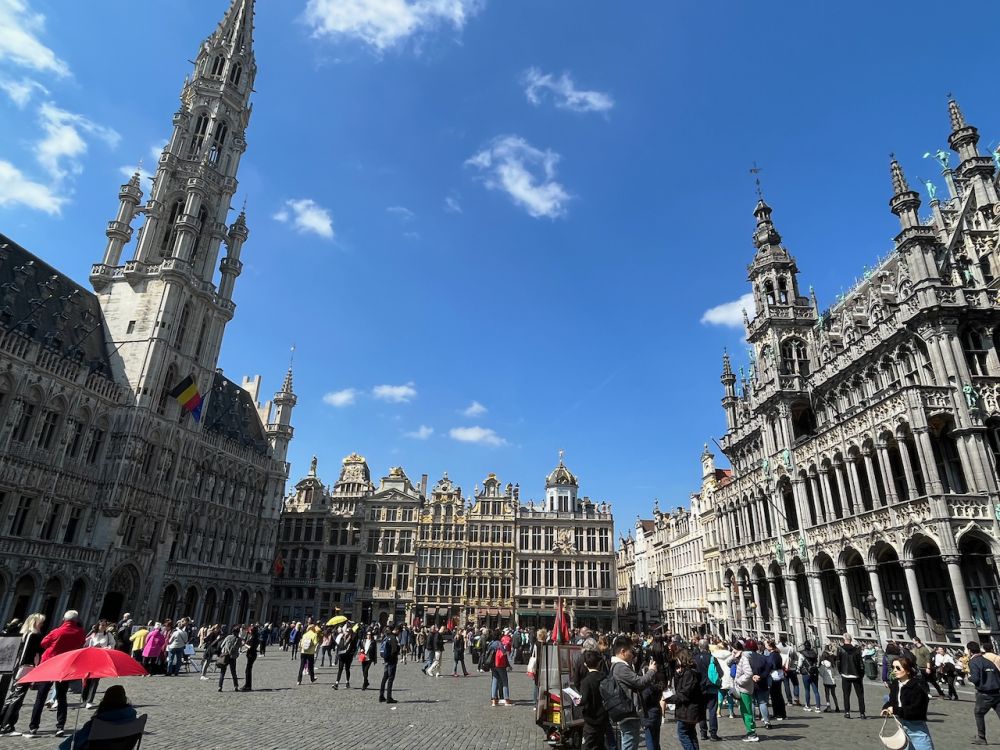
Why is La Grand-Place a UNESCO World Heritage site?
The Grand-Place is a World Heritage site due to its architectural significance: its “eclectic and highly successful blending of architectural and artistic styles.” It also meets the requirement for historical integrity, as it has remained virtually unchanged for centuries. Its use over the centuries is another part of the designation: “Through the nature and quality of its architecture and of its outstanding quality as a public open space, the Grand-Place illustrates in an exceptional way the evolution and achievements of a highly successful mercantile city of northern Europe at the height of its prosperity.” (UNESCO)
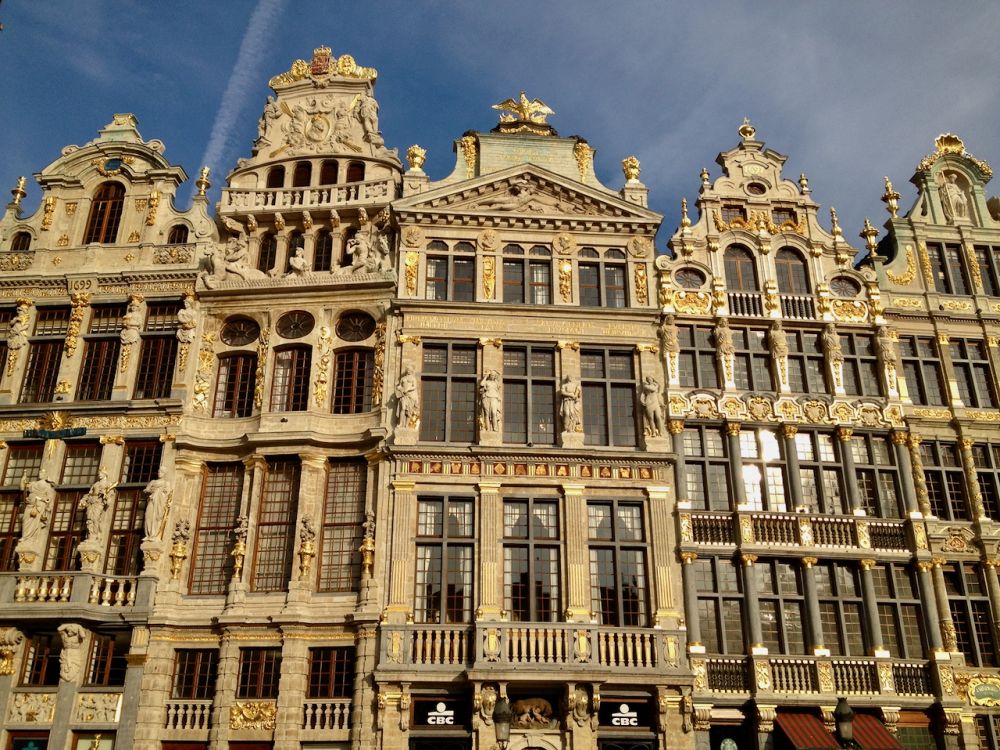
What can you expect on a visit to La Grand-Place?
The Grand-Place is the starting point for any visit to the city of Brussels. It’s not only culturally significant and visually stunning, but its central location makes it the ideal starting point for a walking tour of the city. It also showcases, through its architecture, the history of the city from medieval times up until the early modern period.
These days, it’s also a great place to savor a meal or one of Belgium’s many local beers while enjoying a view of the square from inside one of the historic guild houses or from one of the outdoor tables (in good weather). Those who want to learn more about the history of the city can visit the Museum of the City of Brussels, located in the Maison du Roi.
Occasionally the square is also home to special events like concerts and festivals. In July, the historic Ommegang pageant (itself counted as UNESCO Intangible Cultural Heritage) culminates in a grand spectacle on La Grand-Place. And every two years in August, the Brussels Flower Carpet is assembled on the cobblestones. The best views of it are from the balconies of the Hôtel de Ville or Maison du Roi.
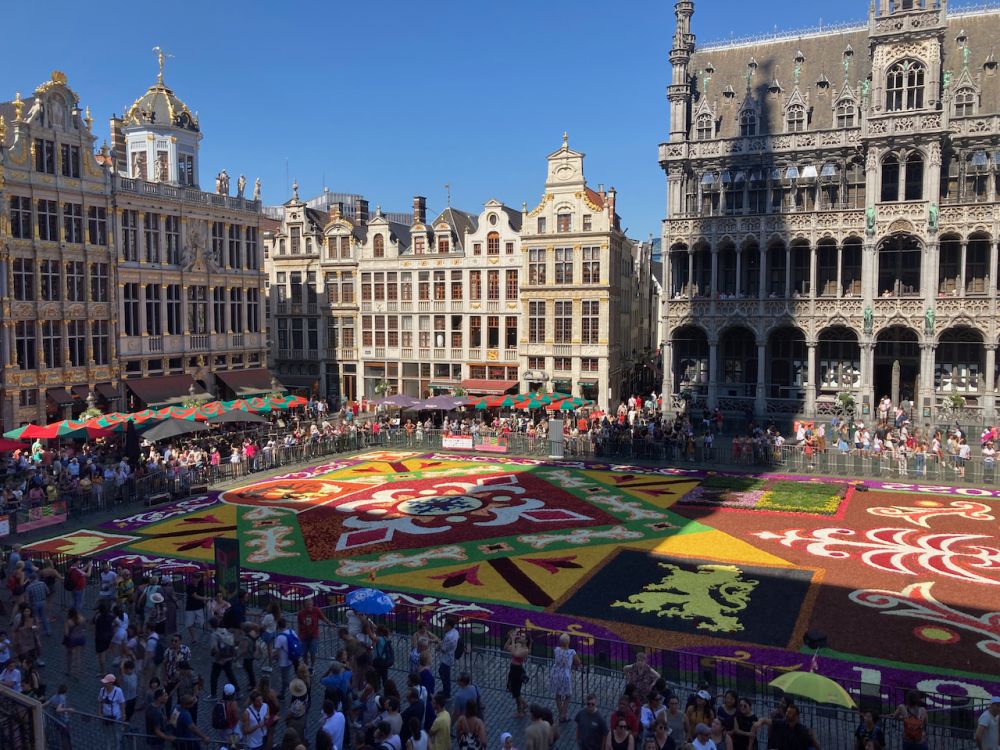
Use the map below to find accommodations in Brussels:
Is La Grand-Place worth visiting?
This beautiful square is absolutely worth a visit as it’s one of the most stunning public spaces in Europe. It’s also free and easy to access. You can see and appreciate the square in a few minutes, or you can spend longer there should you decide to tour city hall or visit the museum. The restaurants and cafés on the square are also popular places to sit and enjoy the view over a drink or a meal.
Tips for visiting La Grand-Place
The square is an easy five-minute walk from Brussels Central train station. Those traveling by car can park in the nearby underground public parking lot. Be aware that the Grand-Place and surrounding streets are paved with cobblestones, so good walking shoes are recommended.
The Grand-Place is close to many other attractions and sights in the center of Brussels, such as Mannekin-Pis (a famous statue of a peeing boy), the Cathedral of St. Michael and St. Gudula, the Royal Gallery of St. Hubert (a 19th-century shopping arcade), and Belgian Beer World.
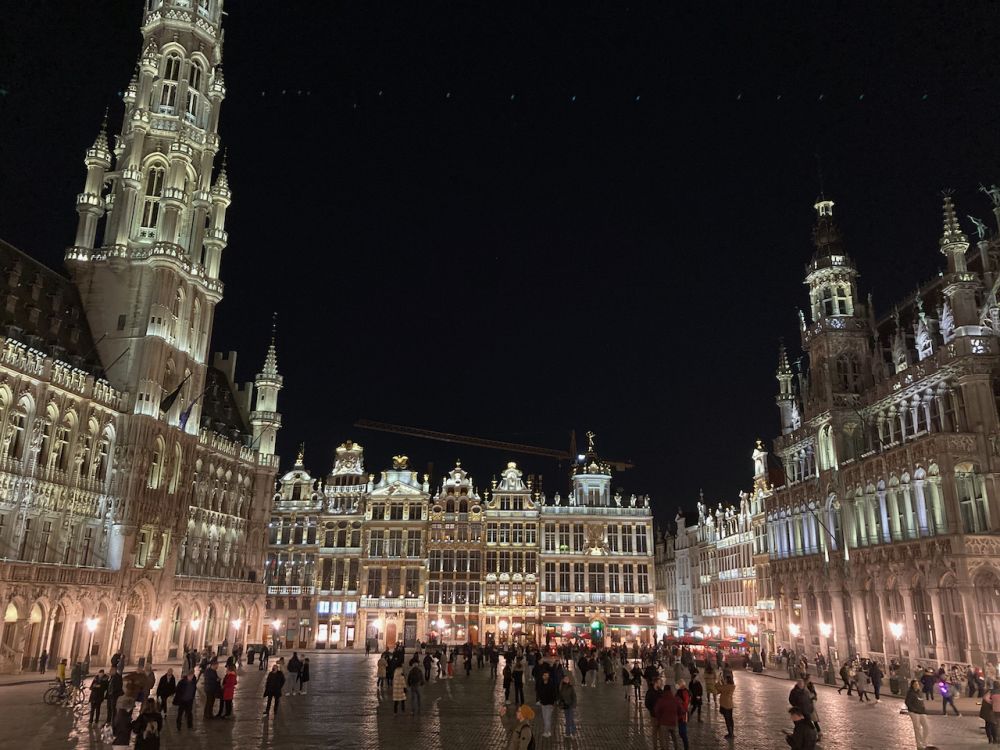
While you’re in Brussels, make sure to see the Major Town Houses of the architect Victor Horta, which together form another UNESCO site.
Where is La Grand-Place?
Located in the historic center of Brussels, it’s close to Brussels Central train station. As a public square, it is free to visit and freely accessible every day.
For more information, see the City of Brussels website.
Have you been to La Grand-Place in Brussels? If so, do you have any additional information or advice about this UNESCO World Heritage site? Please add your comments below!

